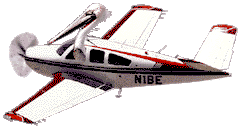SixPapaCharlie
May the force be with you
- Joined
- Aug 8, 2013
- Messages
- 16,059
- Display Name
Display name:
Sixer
I have a plane that has Aux tanks. Each holds 15 Gallons. I plan 15 GPH for every flight knowing I burn more like 13. I like buffers.
I have flown with a 2 people this week that both mentioned running the aux completely out then flying on the mains.
Generally when I run a tank dry, it is as much a surprise to me as it is other people in the plane. Running the aux dry, I get means there are 2 less tanks to question regarding the volume but even the one time I did it on purpose, I still have 5 seconds of elevated blood pressure and a slight shock. But the engine has started again and all is good.
How many of you run your aux tanks dry regularly? I like the idea of knowing I don't have to do that *weird pilot math on those tanks but I don't like the part where the engine gets jittery at the end.
*Worst case scenario, I know there is "some" fuel there if I need it but could be a minute. Could be 30. Gauge reads zero-ish though.
I have flown with a 2 people this week that both mentioned running the aux completely out then flying on the mains.
Generally when I run a tank dry, it is as much a surprise to me as it is other people in the plane. Running the aux dry, I get means there are 2 less tanks to question regarding the volume but even the one time I did it on purpose, I still have 5 seconds of elevated blood pressure and a slight shock. But the engine has started again and all is good.
How many of you run your aux tanks dry regularly? I like the idea of knowing I don't have to do that *weird pilot math on those tanks but I don't like the part where the engine gets jittery at the end.
*Worst case scenario, I know there is "some" fuel there if I need it but could be a minute. Could be 30. Gauge reads zero-ish though.


